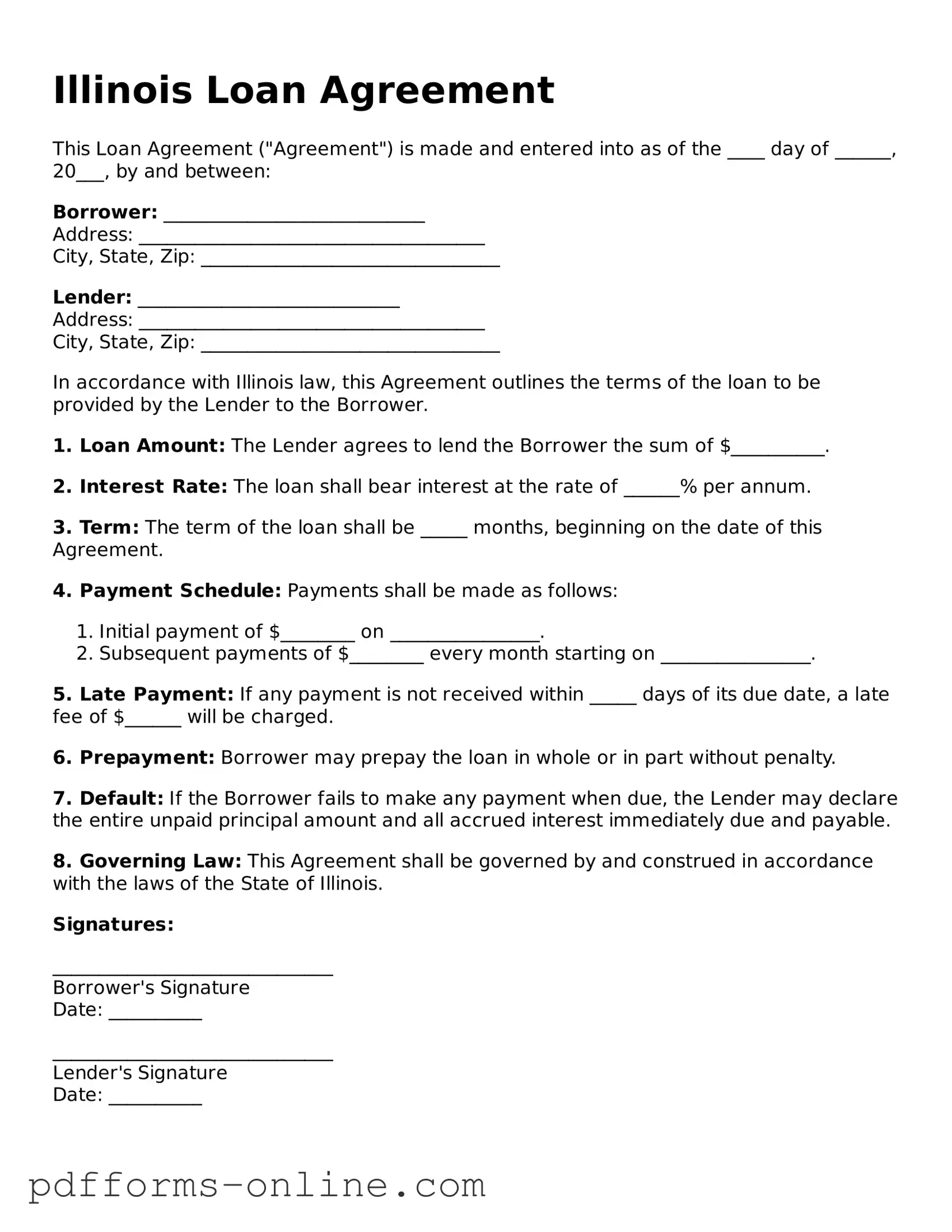Illinois Loan Agreement
This Loan Agreement ("Agreement") is made and entered into as of the ____ day of ______, 20___, by and between:
Borrower: ____________________________
Address: _____________________________________
City, State, Zip: ________________________________
Lender: ____________________________
Address: _____________________________________
City, State, Zip: ________________________________
In accordance with Illinois law, this Agreement outlines the terms of the loan to be provided by the Lender to the Borrower.
1. Loan Amount: The Lender agrees to lend the Borrower the sum of $__________.
2. Interest Rate: The loan shall bear interest at the rate of ______% per annum.
3. Term: The term of the loan shall be _____ months, beginning on the date of this Agreement.
4. Payment Schedule: Payments shall be made as follows:
- Initial payment of $________ on ________________.
- Subsequent payments of $________ every month starting on ________________.
5. Late Payment: If any payment is not received within _____ days of its due date, a late fee of $______ will be charged.
6. Prepayment: Borrower may prepay the loan in whole or in part without penalty.
7. Default: If the Borrower fails to make any payment when due, the Lender may declare the entire unpaid principal amount and all accrued interest immediately due and payable.
8. Governing Law: This Agreement shall be governed by and construed in accordance with the laws of the State of Illinois.
Signatures:
______________________________
Borrower's Signature
Date: __________
______________________________
Lender's Signature
Date: __________
